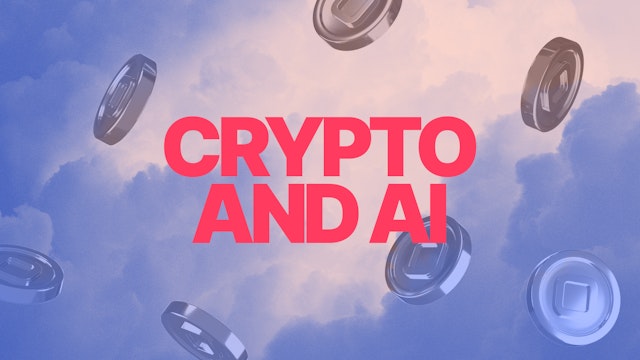Lost in Transit: Transferring Crypto on the Wrong Network
What happens when you use the wrong network to transfer crypto? And can it be fixed?
In this article...
- Have you transferred crypto on the wrong network?
- Are you worried about recovering funds?
- There may be a solution at hand for your mistake.

Have you transferred crypto on the wrong network? Are you worried about recovering funds? Before you get that horrible sinking feeling where you want the earth to swallow you up and hug you for days straight, there is hope of salvation.
The world of cryptocurrency can be exciting and rewarding, but it also comes with its own set of risks. One common pitfall that many investors, especially newcomers, encounter is transferring cryptocurrencies over the wrong network. This mistake can lead to the loss of funds. The funds can’t always be retrieved, but sometimes they can.
Why the wrong network means lost crypto
Cryptocurrencies often exist on multiple networks, each with its own unique technology and infrastructure. It is like sending a package.
You need the correct address and courier service to ensure delivery. Sending Bitcoin to an Ethereum address, or vice versa, is like sending a package to the wrong country – it simply won't arrive. But it will certainly leave your possession and disappear into the ether.
When you initiate a crypto transfer, you need to specify both the recipient's address and the correct network. If these don't match, your funds may become inaccessible. This is because different networks have different protocols and validation rules.
How it can go wrong
A Reddit user found themself in a hard spot due to using the wrong network.
For this unfortunate crypto enthusiast, sending Ethereum (ETH) from Binance to Independent Reserve using the Binance Smart Chain (BSC) instead of the Ethereum mainnet resulted in the ETH being lost in transit. This is because Independent Reserve doesn't support BSC for ETH deposits.
Independent Reserve, in this case, may charge a $500 fee to recover the misplaced funds (according to the OP). This incident shows the importance of double-checking all transfer details before hitting 'send'.
Recovery options
Different exchanges have varying policies and fees for recovering crypto sent over the wrong network. Not all do “extractions” as it is called, but if they do, they can charge up to $500+ for the service. And recovery isn’t guaranteed, even after the fee is paid. CoinJar offers recovery services for various scenarios, including unsupported networks and tokens.
There is a fee ($100 AUD or £100) to initiate the recovery process, but the investigation itself is free. However sometimes the funds cannot be recovered. You only pay if we think there's a chance of recovery, and you get your money back if we're unsuccessful.
Brokers vs. exchanges: Understanding the difference
When transferring crypto, it's crucial to distinguish between brokers and exchanges.
Brokers
Brokers act as intermediaries, facilitating trades on your behalf on external exchanges. They often support more networks due to the wider range of exchanges they connect to. If you send funds to the wrong network via a broker, the recovery process depends on the policies of the final exchange where the funds end up. This can lead to a very long, drawn out process as the broker is relying on the exchange to follow up.
Exchanges
Exchanges provide a platform for directly buying, selling, and trading cryptocurrencies. Their recovery capabilities can have greater flexibility and may allow for recovery, although it may still involve fees.
Avoiding wrong network transfers
-Double-check everything. Verify the recipient's address, the correct network, and the chosen cryptocurrency before initiating any transfer.
-When sending to a new address or using a new network, send a small test amount first to ensure it arrives successfully.
-Choose a wallet that clearly displays network information and provides warnings about potential mismatches.
-Enable address whitelisting where available. This is a pre-approved list of crypto addresses that you trust and want to send funds to.
-Pay attention to network warnings in wallet interfaces.
-Be especially careful with wrapped tokens (like WBTC or WETH).
-Read the exchange's instructions. Carefully review the deposit instructions on the receiving exchange's website.
-Contact support if unsure.
Conclusion
In many cases, recovery might be completely impossible, especially if the receiving address doesn't exist on the target network or if the receiving platform doesn't have access to the private keys for that network.
In any case, a call to customer support will shine light on your situation.

Suggested Articles

Fantom to Sonic: What CoinJar Users Should Know
What is happening with Fantom? What is Sonic? Here is everything you need to know.Read more
Introducing CoinJar's New “Lock Feature” in Case Something Sus Happens
The Lock feature is here! CoinJar has launched a new feature designed to give you greater control over your CoinJar account security. Read more
How AI Is Being Used in Cryptocurrency
AI is marching fast into every sphere on the planet, and crypto is no exception. Here are the latest developments in the merging of crypto and AI. Read moreBrowse by topic
The above article is not to be read as investment, legal or tax advice and takes no account of particular personal or market circumstances; all readers should seek independent investment, legal and tax advice before investing in cryptocurrencies.
This article is provided for general information and educational purposes only. No responsibility or liability is accepted for any errors of fact or omission expressed therein. CoinJar, Inc. makes no representation or warranty of any kind, express or implied, regarding the accuracy, validity, reliability, availability, or completeness of any such information.
Past performance is not a reliable indicator of future results.
Your information is handled in accordance with CoinJar’s Privacy Policy.
Copyright © 2025 CoinJar, Inc. All rights reserved.
CoinJar, Inc. is a registered Money Services Business with FinCEN and licensed as a money transmitter, NMLS #2492913. For a list of states in which CoinJar, Inc. is licensed or authorized to operate, please visit here. In certain other states, money transmission services are provided by Cross River Bank, Member FDIC.
This site is protected by reCAPTCHA and the Google Privacy Policy and Terms of Service apply.

